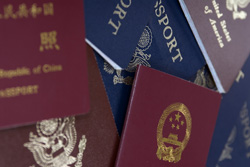A comprehensive border strategy
European land and sea borders are becoming a challenge to monitor as the global economic crisis renders Europe much more attractive to migrants. At the same time, Europe takes pride in free movement and privacy, which often contradict security requirements. Southern European countries such as Greece, Italy, Malta and Spain are especially affected by the large numbers of refugees and asylum seekers that are heading to their shores and borders illegally. The EU wants to outline an integrated border management strategy capable of allowing smooth entry into its territory while guaranteeing its security; it wants to balance the challenge of illegal immigration with protection of fundamental rights. Such a new strategy must consider the increasing flows of travellers while ensuring mutual cooperation among European countries. A strategy to set up a European system of integrated border management must be based on targeted results, evolving over time and adapting to emerging needs, risks and priorities. The EU-funded 'European Global Border Environment' (Globe) project has investigated the long-term objective of integrating border management across the continent. It has studied the gradual convergence of currently isolated activities related to border management such as security checks on people and goods, surveillance and police investigation. The convergence principle would apply to all areas where closer relations between EU Member States could be developed, such as border forces, institutions, practices, equipment and legal frameworks. The project has outlined a roadmap to achieve a global border environment. It has undertaken initiatives inside and outside the EU to tackle the various problems faced by national, regional and EU-level authorities. This roadmap is a unique document that provides guidelines for achieving the project's mission. It includes a priority list of issues and actions such as technology maturity, deployment of proposed technology, critical factors, unaddressed areas and financial restrictions. In addition, political and economic issues as well as those affecting international treaties and conventions are underlined and taken into consideration The results of this work can be used to fine-tune policy within Europe's Framework Programme for Research and Technological Development. They help identify possible topics for future projects in this field that tackle arising needs and difficulties. The roadmap also investigates the current state of the art to help stakeholders participate in technology demonstrations. It provides them with an analysis tool to evaluate emerging technologies for industry, universities and interested institutions while identifying technologies overlooked by experts in recent years. A common border strategy for Europe and the roadmap to policies that achieve this goal will make Europe tackle mass migration, contraband and other border-related issues. A system that is more in touch with current realities is needed, and this initiative goes a long way in addressing these needs.




